How to Tell if a Sofa is Good Quality or Not
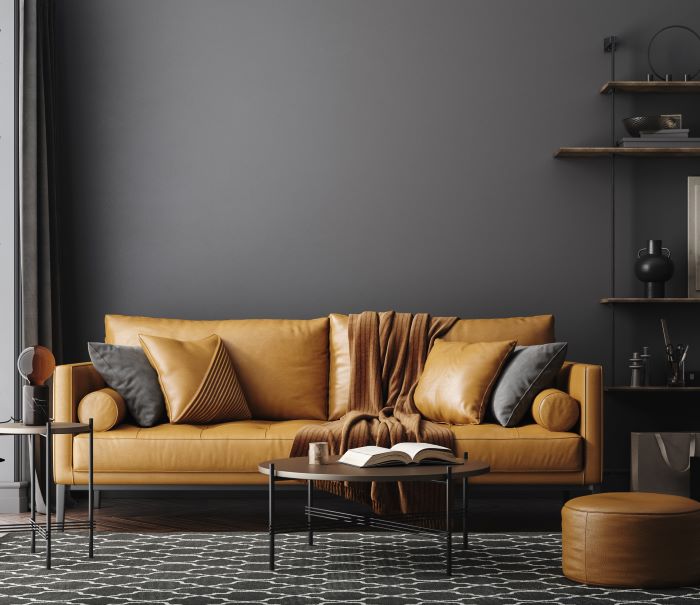
Have you ever thought you'd found the forever sofa for your living room, one with the perfect style, fabric, and price? And then a year or two later the seats started to sag, the middle broke down, and the upholstery came apart at the seams? You’re not alone.
More and more consumers are discovering that the sofas for which they paid good money and thought would last more than 10 years are falling apart after only a few years. Sofas used to be built to last upwards of 15 years or more. These days, the average sofa lasts seven years or less.
Why the decline in quality? Industry experts point to a “fast fashion” mentality among makers—as well as a flood of new, often trendy, furniture makers. The rising cost of materials is also a culprit, causing some manufacturers to use cheaper materials and methods to construct pieces.
Space Makers Junk Removal gets a lot of calls to haul off old couches, as well as some that aren’t that old, as part of our furniture removal services in the San Antonio area. And while we’re happy to take away those old or broken-down sofas, we’d also like to help you find one that won’t end up in a landfill after only a few years.
The next time you’re at a furniture store in search of a quality sofa, ask questions about how the sofa is constructed. Here are five things you need to look for as you shop:
- A well-constructed frame
- Heavy springs
- High density foam cushions
- Durable fabric
- Expert tailoring
WHAT TO LOOK FOR IN A FRAME
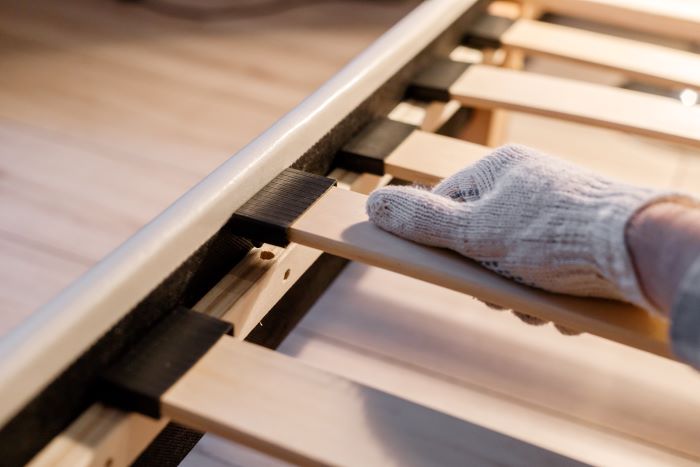
The sturdiest frames are made from solid hardwoods like oak, maple, walnut, or mahogany. Many furniture pieces you find in antique stores have survived so long because they were made from hardwoods. Avoid frames constructed from particleboard, which is made from pieces of wood and shavings mashed together. Also avoid frames made from medium-density fiberboard (MDF), which consists of sawdust and wood shavings mixed with resin and wax. Particleboard and MDF are weaker materials that can more easily crack, and they don’t hold screws as well as hardwood does.
Frames should be put together using interlocking pieces of hardwood rather than pieces connected with brackets, which can bend or snap. Ask about a sofa’s construction. Look for pieces put together using dowel joints (when cylindrical wood rods are inserted into another board) or mortise and tenon joints (using tenons instead of dowels). Those are the strongest types of joints.
Sofas that are good quality should come with a lifetime warranty on the frame.
WHAT TO LOOK FOR IN SOFA SPRINGS
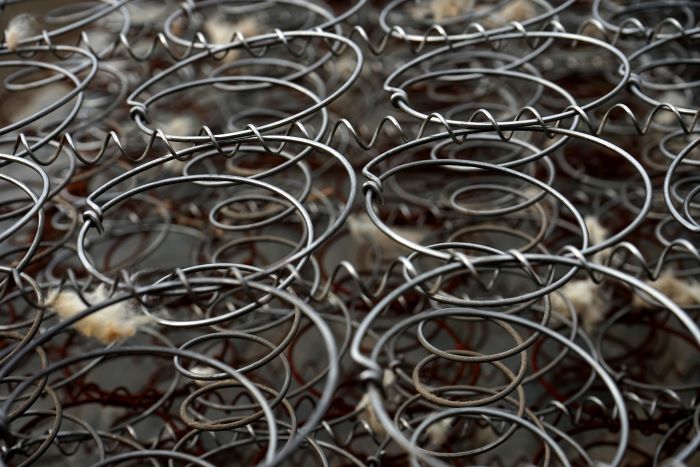
When it comes to a sofa’s suspension system, look for springs made of heavy metal and constructed closely together. When you try out a sofa in the showroom, bounce on it as you sit down. Pay attention to whether the springs feel firm or have a lot of give to them. Springs that are constructed with a lot of space between them will feel weaker or bouncier, and that’s a sign they’ll stretch and give out sooner, leading to a saggy couch. Also listen as you sit on a couch. You shouldn’t hear a suspension that squeaks.
Good quality sofas should include a lifetime warranty on the suspension system.
WHAT TO LOOK FOR IN CUSHIONS
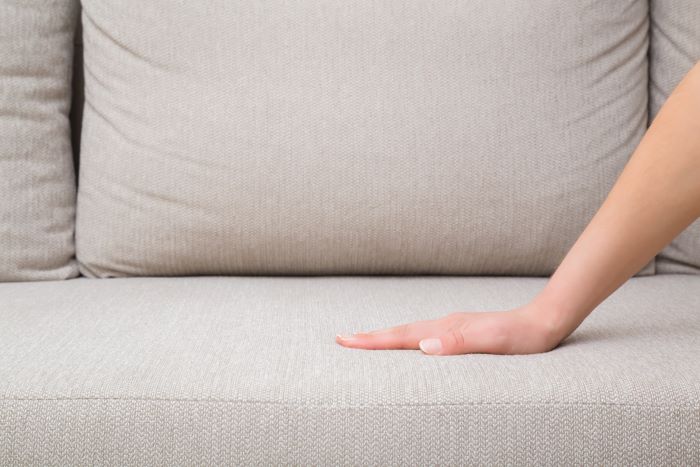
Whether you like a soft, squishy cushion, a firm cushion, or something in-between, look for cushions made using high density, high resiliency foam cores. High density means the foam has a density of at least 1.8 lbs. per square foot. High resiliency means the foam returns to its shape quickly after you get up. Avoid cushions made from polyurethane foam, which is less durable. Softer cushions will still have an HD core on quality couches, but that core may be surrounded by fill made from down, Dacron polyester, or a combination of the two. Avoid fillers made of cotton, since cotton tends to clump.
Good quality sofa cushions will also have zippers so you can get inside to replace or redistribute the foam. Cushion casings should fit tightly around a core rather than be loose or sloppy. At the store, go ahead and unzip a cushion casing and look inside. You should see a thick foam core or neat layers of foam rather than messy layers or pieces of foam stuffed inside. For softer cushions, you should see down, Dacron polyester, or a combination of the two neatly placed inside individual chambers (think of an egg carton), rather than stuffed messily inside. Individual chambers prevent lumpy spots.
WHAT TO LOOK FOR IN FABRIC

Think about how you’re going to use your sofa. Will it anchor a formal living room, where you sit only when you have company? In that case, a pretty but less durable fabric might be okay. If you anticipate lots of use for your couch, then you want a fabric that can stand up to kids, spills, and pets, like velvet, ultrasuede, leather, an outdoor fabric, or canvas.
In addition, think about how you might clean the couch. If you don’t have time to steam clean a couch periodically, then don’t choose a fabric that will show stains or trap odors.
When it comes to leather, watch out for sofas covered in “genuine leather.” While genuine leather sounds good, it’s actually a mashup of leather scraps glued together to look like a single piece. Genuine or faux leather can flake off or fall apart with wear. Look for top grain cowhide, which is leather made from a single piece of cowhide and will last much longer.
WHAT TO LOOK FOR IN TAILORING
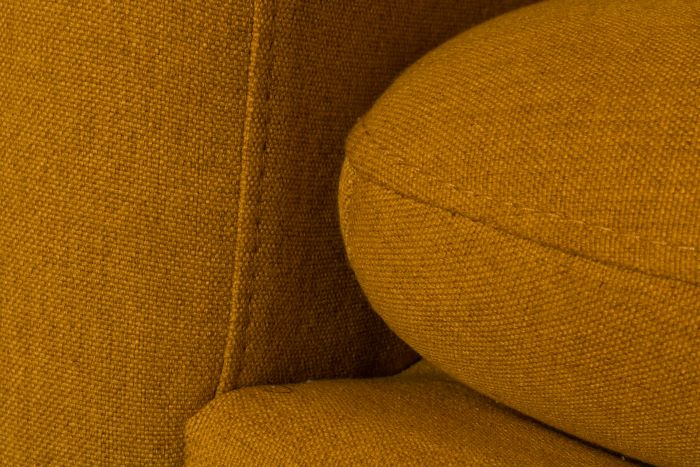
Whatever fabric your sofa is covered in, the tailoring should be well done. The upholstery should be tight, not loose. Any piping should be firmly sewn onto the couch. Seams should be straight, with few loose threads hanging out. If your sofa fabric has a pattern like paisley or flowers, make sure the patterns come together well and match. For example, you wouldn’t want seat cushions in a plaid pattern that didn’t match when the cushions are side by side.
CALL SPACE MAKERS JUNK REMOVAL TO TAKE AWAY OLD, BROKEN-DOWN FURNITURE
resized.2402050817550.jpg)
Let’s face it, when you need to get rid of an old sofa, it’s not as simple as lugging it out to the curb for the trash truck to pick up. Municipal services often don’t take such large furniture items. And if your sofa is too broken or stained to donate, then you’re stuck with it. That’s where Space Makers Junk Removal can help. We can haul off any old sofas, broken-down couches, or other furniture items that you need to get rid of. We can even tackle heavy sleeper sofas, bulky sectional sofas, or sofas with extras like cupholders or extendable footrests.
CONTACT US TODAY to haul off your old sofa so you can find that new sofa that’s perfect for your space!
